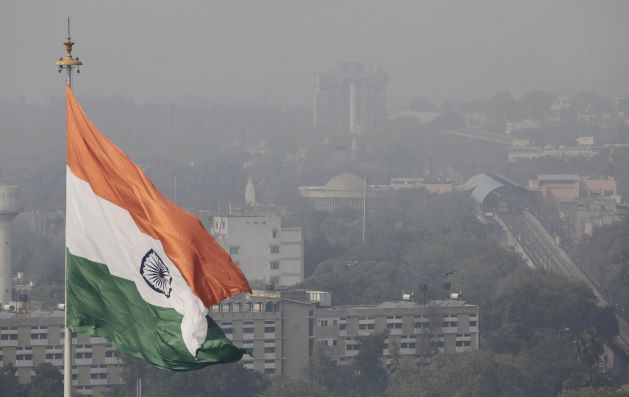

One problem, Many Sources
More than 674 million Indian citizens are likely to breathe air with high concentrations of Particulate Matter (PM) 2.5 in 2030, even if the country were to comply with its existing pollution control policies and regulations.
The study released by the International Institute for Applied Systems Analysis (IIASA) and the Council on Energy, Environment, and Water (CEEW), shows that only about 833 million citizens would be living in areas that meet India’s National Ambient Air Quality Standards (NAAQS) in 2030.
The report says that if sustainable development policies are aligned to the implementation of advanced emission control technologies, NAAQS-compliant air quality will be available to about 85 % of the Indian population.
According to the study in 2015, more than half of the Indian population, about 670 million citizens, were exposed to PM2.5 concentrations that did not comply with India’s AQI for PM2.5 (40 mg/m3).
Further, less than 1 percent enjoyed air quality that met the World Health Organisation (WHO) benchmark limit of 10 mg/m3. Markus Amann, Air Quality and Greenhouse Gases Program director, IIASA, explained, “A significant share of emissions still originates from sources associated with poverty and underdevelopment such as solid fuel use in households and waste management practices”
NCAP
In January 2019, the Indian government launched the National Clean Air Program (NCAP), a five-year action plan to curb air pollution, build a pan-India air quality monitoring network, and improve citizen awareness.
The program focuses on 102 polluted Indian cities and aims to reduce PM2.5 levels by 20-30 per cent over the next five years.
The analysis conducted by researchers from IIASA and CEEW, however, suggests that NCAP needs to be backed by a legal mandate to ensure successful ground-level implementation of emission control measures; and scale up soon.
Pallav Purohit, an IIASA researcher and lead author of the study said, “While current ambient PM2.5 monitoring in India reveals high levels in urban areas, remote sensing, comprehensive air quality modelling, and emission inventories, suggest large-scale exceedances of the NAAQS, also in rural areas.
“Pollution from rural areas is transported into the cities (and vice versa), where it constitutes a significant share of pollution making the coordination of urban-rural and inter-state responses critical,” Mr. Purohit added.
Low Carbon Growth Model
The governments in these regions must design state-specific policies to comply with NAAQS and embrace a low-carbon growth model to ensure better air quality for its citizens.
Further, the study highlighted a stark variance in factors contributing to air pollution across the states. Solid fuel, including biomass combustion for residential cooking, is the largest contributor in the major states of the Indo-Gangetic Plain.
However, in Delhi and Goa, it contributes only a small amount due to enhanced access to clean fuels in these states. Instead, Nitrogen Oxide emissions from transportation are major contributors to air pollution in these two states.
Similarly, Sulphur dioxide emissions from power plants are dominant contributors to air pollution in Haryana and Maharashtra.
State-specific policies
In coming years, every state government must commission detailed scientific studies to better understand the sources contributing to air pollution in their cities. Hem Dholakia, a senior research associate at the CEEW, and one of the authors of the study added,”The IIASA-CEEW study clearly shows that the policy choices of today will impact future air quality and its aftermaths. The central and state governments must do more to align air quality, climate change, and sustainable development goals in a resource efficient manner.”
The study also found that the Indo-Gangetic plain, covering parts of states such as Punjab, Haryana, Uttar Pradesh, Bihar, and West Bengal, has the highest population exposure to significant PM2.5 concentrations.
This is mainly due to the high density of polluting sources and reduced ventilation by the obstructing presence of the Himalayas. Citizens living in parts of Bihar, West Bengal, Chhattisgarh, and Odisha are also exposed to high levels of PM2.5.
Another challenge for many states is that emission sources that are outside their immediate jurisdiction.
For example, transboundary transport or crop burning are sources of secondary pollution in some states. Such states could achieve significant improvements in air quality only with a region-wide coordinated approach to reduce air pollution and strict on-ground enforcement to ensure compliance with emissions control measures.
The IIASA-CEEW study also recommends focusing on energy efficiency, enhanced public transport, increased use of cleaner fuels, improved agricultural production practices, and replacement of coal with natural gas and renewables in the power and industrial sector to achieve better air quality and meet multiple Sustainable Development Goals (SDGs).
To read the report click here
1. The mandate for blending Compressed Biogas (CBG) with natural gas has come into effect…
Andhra Pradesh is striving towards greening its energy sector with quite some speed. In a…
With an objective to bolster India’s green energy goals, a Tripartite Agreement has been signed…
The Union MNRE Minister Pralhad Joshi launched the Green Hydrogen Certification Scheme of India (GHCI)…
India’s energy conglomerate Bharat Petroleum Corporation Limited (BPCL) has commissioned a 5MW green hydrogen plant…
In a historical development, the European Space Agency (ESA) has successfully launched its pioneering ‘Biomass’…